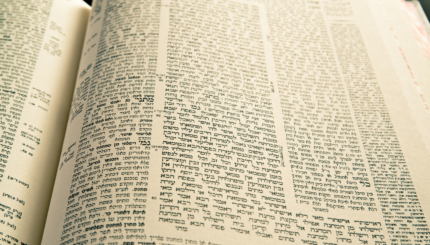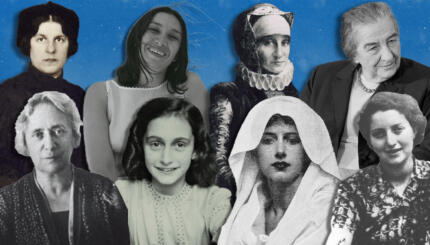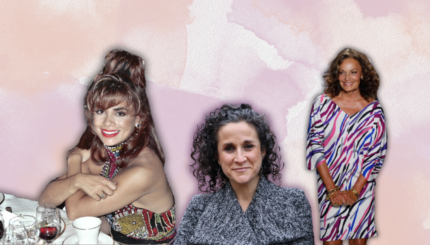Jew. Woman. American. Those three attributes are as intrinsic to my identity as my own name. A close fourth would be “traveler,” and how I navigate the globe is deeply tied to all three parts of my being.
In the past twenty months I have found myself in eighteen different countries, some for work and some for pleasure. I am a veritable wanderer. Travel is in my bones, and it’s something I’ll do for as long as I live. It always comes with its struggles, worthy though they may be: language, food, culture shock, and unusual forms of transportation. But the greatest struggle of the past two years has been defining and maintaining my Judaism. In college, I had an incredible, vibrant community that I called home. I could challenge aspects of it, I could complain (as we all do) about this and that, but by and large it sustained me and I knew my place in it. These past twenty months I’ve had many homes and I’ve had none. I currently live out of a suitcase in half a dozen European capitals, and my home is a storage unit on 21st Street and 11th Avenue in Manhattan. I’ve been forced to reckon with those aspects of Judaism that I struggle with, make compromises I wasn’t always proud of, and explain to strangers what Jews even are. I am learning every day what it means to live as a Jew in Asia, in Europe, and in America, and slowly discovering how I want to define my Judaism to myself and to others.
As a woman traveling alone, I am regularly met with confusion or shock. I take it in stride. Traveling alone is deeply empowering, and it’s an experience I think every woman ought to have.
Reflecting back on the past twenty months, three experiences in three very different synagogues stand out to my female, Jewish-American sensibilities:
I
Friday night in Warsaw, I arrived a little late to the Nożyk synagogue. Expecting an older and smaller crowd, I was shocked when I walked into to the sanctuary to a bellowing, exuberant Kabbalat Shabbat service. There were hundreds of teenagers as far as the eye could see, and suddenly I remembered that March of the Living was in town. Soaring cries filled the building, though I quickly realized that the voices were only coming from below, in the men’s section. The girls were clamoring for space, leaning over the too-tall balcony, craning their necks and fighting to see the life, the worship taking place below. They might have been singing, but I couldn’t hear them.
II
Chabad of Bangkok was my religious home during the year I taught English in Thailand. The hodge-podge expat community wasn’t always a perfect fit, but it sustained me. I walked into synagogue at 10pm on Shavuot to learn, and saw only two women among the men crowded around a table in the women’s section. The women were on the outside of the circle, politely listening in. I raised my eyebrows at them and dragged a chair into the middle of the circle, muttering “hell no” to myself. I was the only woman to stay up until 4am with men many years my senior, learning and debating over Rambam’s list of 613 mitzvot. I was told several times that year by my friends in the community that I “scared off the men” with my feminist ideas and my learning.
III
On Shabbat afternoon during Passover in Florence I headed to a small, sunlit salon next to the synagogue. A group of women had arranged a reading of Shir Hashirim, the Song of Songs, for the second year in a row. Eighteen older women sat in an oval in the center of the room, flanked by more who came to listen. The melody began, piercing the air with melancholy, longing and holiness. Each woman sang her own part (some voices were beautiful, others less so) and all of their voices contributed to a greater whole: a true love song to the Jewish people, and to God, in a Florentine tune forgotten by the men of the community and resurrected by its women. Typically in the Great Synagogue, only echoes of the prayers from the men’s section can be heard, while the women are quiet or chatting, disengaged. But here, it was the voices of women filling the space and claiming it as their own.
In these three very different synagogues I saw a progression of women’s engagement in Jewish ritual life (though disclaimer, I’ve told these stories out of order). In Warsaw, I saw young women who wanted to be involved, but were unable and seemingly unsure of how to do so. In Bangkok, I, who am a little bit older than those girls, asserted myself and claimed the experience that I wanted as a woman, even though it made some uncomfortable. And in Florence, women twice my age had found a space for themselves and had invited others to join in.
I can walk into a synagogue anywhere in the world, find my place in the service, and feel a small sense of belonging. That’s the remarkable thing about travel; finding home in the most unexpected of places. Judaism looks vastly different across borders and outside of America. Communally and religiously, different perspectives are valued, different traditions take center stage, and different approaches exist regarding the shifting roles of women in the world. As I strive for a fully articulated and authentic Jewish practice for myself as a woman and as an American, I often brush against the changing narratives and priorities of these other communities. I’m not always pleased with what I find, and I’m sure I don’t always please my hosts. And yet, we find moments to meet, sometimes reluctantly, sometimes joyfully, but always in our shared space of worship.
Shabbat
Pronounced: shuh-BAHT or shah-BAHT, Origin: Hebrew, the Sabbath, from sundown Friday to sundown Saturday.
Shavuot
Pronounced: shah-voo-OTE (oo as in boot), also shah-VOO-us, Origin: Hebrew, the holiday celebrating the giving of the Torah at Mount Sinai, falls in the Hebrew month Sivan, which usually coincides with May or June.



